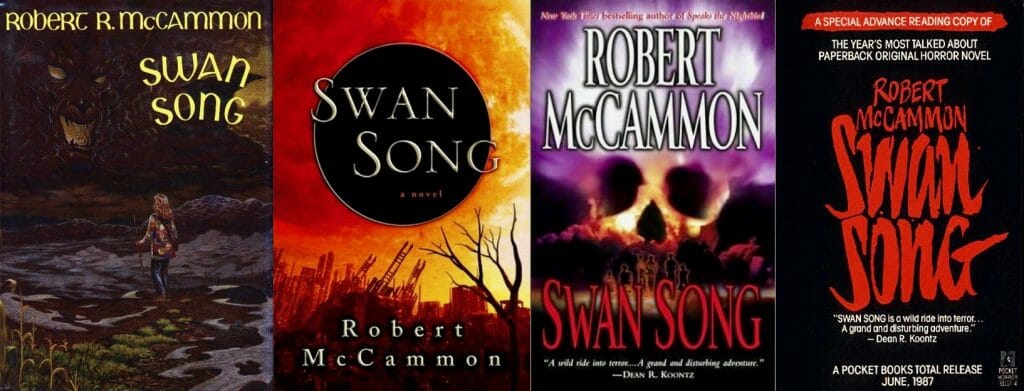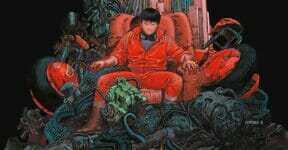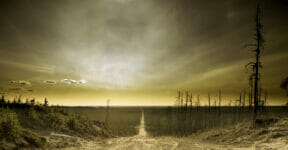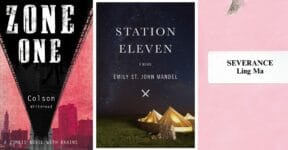In the realm of post-apocalyptic fiction, certain novels stand as pillars, masterfully crafting a world of desolation, hope, and the indomitable human spirit. “Swan Song” by Robert McCammon is one such towering achievement. Published in 1987, this epic tale of survival, redemption, and the eternal struggle between good and evil has captivated readers for decades. With its rich character development, intricate plot, and evocative prose, “Swan Song” is a timeless masterpiece that continues to resonate with readers, offering a reflection on the resilience of humanity in the face of utter devastation.
“Swan Song” unfolds against the backdrop of a nuclear holocaust that has devastated the world as we know it. Set in the aftermath of a devastating war, the novel presents a landscape scarred by destruction, where cities are reduced to ruins, nature itself has been tainted, and the very fabric of society has unraveled. However, amidst this bleakness, a glimmer of hope emerges as a mystical young girl known as Swan.

As the novel’s central figure, Swan possesses an otherworldly ability to heal and transform the world around her. Her journey serves as a metaphor for the potential for renewal and rebirth in the face of catastrophe. Through Swan, McCammon highlights the capacity of humanity to heal, rebuild, and emerge stronger from the ashes. Swan becomes a symbol of resilience, reminding readers that even in the darkest of times, the human spirit possesses the power to heal and transform.
One of the novel’s greatest strengths lies in its deep and multi-dimensional characters. McCammon paints a diverse cast, each grappling with their own fears, flaws, and aspirations. The character’s evolution throughout the story is a testament to the author’s skill in creating realistic and relatable individuals.
Joshua, an elderly black man, stands out as a prime example of the novel’s character depth. His journey from bitterness and anger to becoming Swan’s protector and guide mirrors the broader theme of transformation. Joshua’s growth underscores the potential for change and redemption even in a world that seems irreparably broken.
On the other side of the spectrum, we have the novel’s antagonist, Roland Croninger. A manifestation of evil and chaos, Roland is a chilling portrayal of the depths of human depravity. His contract with Swan highlights the dichotomy between hope and despair, good and evil, and serves as a constant reminder of the choices that shape the destiny of both individuals and society.
At its core, “Swan Song” is a story of epic struggles between good and evil, symbolized by the forces that gather around Swan and Roland. McCammon skillfully weaves elements of the supernatural and the metaphysical into the narrative, blurring the lines between reality and fantasy. This infusion of ethereal elements elevates the novel beyond a simple post-apocalyptic tale, transforming it into a spiritual journey that explores the deeper aspects of human existence.
The clash between Swan’s healing powers and Roland’s destructive might is emblematic of the perpetual battle between opposing forces that has been a recurring theme in mythology and literature for centuries. This cosmic struggle serves as a reflection of the duality that exists within humanity itself, echoing the eternal debate between our better angels and our darker impulses.
McCammon’s writing prowess shines through in “Swan Song.” His descriptive prose paints vivid landscapes and emotions, immersing readers in a world both hauntingly beautiful and terrifyingly desolate. The author’s ability to evoke emotional responses is a testament to his skill in creating a connection between the reader and the characters, as well as the world they inhabit.
The emotional resonance of the novel lies not only in the epic scope of the story but also in the intimate moments shared between characters. Moments of tenderness, camaraderie, and sacrifice bring a human touch to the apocalyptic setting, reminding readers that even in dire circumstances, the bonds between people endure.
“Swan Song” stands as a testament to the enduring power of literature to capture the essence of the human experience, even in the face of unthinkable devastation. Its exploration of themes such as resilience, transformation, and the eternal struggle between good and evil continues to resonate with readers across generations.
Over three decades after its publication, “Swan Song” remains a must-read for fans of post-apocalyptic fiction, and we can see its impact in the subsequent works that draw inspiration from its themes and narrative depth. The novel’s legacy lies in its ability to inspire contemplation about the fragility of the world we inhabit and the strength of the human spirit to overcome even the most harrowing of circumstances.
In conclusion, “Swan Song” by Robert McCammon is a literary triumph that weaves together elements of destruction, renewal, and the eternal struggle between good and evil into a tapestry of hope and despair. With its deeply developed characters, intricate narrative, and evocative prose, the novel continues to capture the hearts and minds of readers, inviting them to reflect on the resilience of humanity and the enduring power of the human spirit in the face of adversity.
Other things you might want to know:
What real-life event inspired Robert McCammon to write “Swan Song”?
The author, Robert McCammon, revealed that the fear of nuclear conflict during the Cold War era served as a significant inspiration for writing “Swan Song.” The looming threat of nuclear war and its potential aftermath played a pivotal role in shaping the post-apocalyptic landscape and the themes of resilience and survival in the novel.
How does the character Sister Creep contribute to the symbolism of the novel?
Sister Creep, a character with mystical abilities who appears throughout the story, adds an extra layer of symbolism to “Swan Song.” She embodies the concept of destiny and the cyclical nature of life and death. Her presence signifies the spiritual aspects of the narrative, underscoring the novel’s exploration of both literal and metaphorical rebirth.
Are there any notable connections between “Swan Song” and other post-apocalyptic novels?
Yes, “Swan Song” shares thematic elements and narrative motifs with other renowned post-apocalyptic novels like Stephen King’s “The Stand.” Both novels feature a diverse cast of characters navigating a world ravaged by catastrophe, with a central struggle between good and evil. However, while “The Stand” focuses on a super flu outbreak, “Swan Song” centers on the aftermath of a nuclear war, offering a distinct perspective on the genre.
Where does the title come from?
The title “Swan Song” comes from the ancient belief that swans sing a beautiful song just before they die. This symbolism weaves into the narrative, reflecting the idea of finding beauty and purpose even amid destruction.
Has “Swan Song” won or been nominated for any awards?
“Swan Song” was nominated for several prestigious awards, including the Bram Stoker Award for Best Novel. The novel’s lasting impact on the genre has cemented its position as a classic of post-apocalyptic literature.
What else does “Swan Song” deal with about people?
Beyond the physical challenges of survival, “Swan Song” delves deep into the human psyche, examining how individuals respond to adversity and the choices they make when faced with moral dilemmas. This exploration of human nature adds a layer of complexity to the characters and their interactions.
Check out other articles by month:







